What does inedible honeysuckle look like and how to distinguish it from edible one?
Honeysuckle has long ceased to be a strange plant. Every year more and more summer residents plant it in their garden plots. The culture is unpretentious in cultivation, adapts to any climatic conditions, and pleases with an early harvest. Delicious jams and compotes for the winter, vitamin tinctures and decoctions are prepared from blue fruits. Let's consider what types of shrubs exist, how not to confuse blue honeysuckle and wolfberry, and which of them is poisonous.
Are all honeysuckles edible?
Exists edible And decorative honeysuckle. If the word “edible” speaks for itself, then the berries of decorative honeysuckle are not suitable for food or use in cooking (as a topping or decoration). They are inedible and even poisonous, and therefore dangerous to life and health.
What does honeysuckle look like?
It is easy to distinguish edible common honeysuckle from inedible ones; The main thing is to know the characteristics of each type.
The decorative one is distinguished by multi-colored flowers and a fluffy dense crown.
Edible
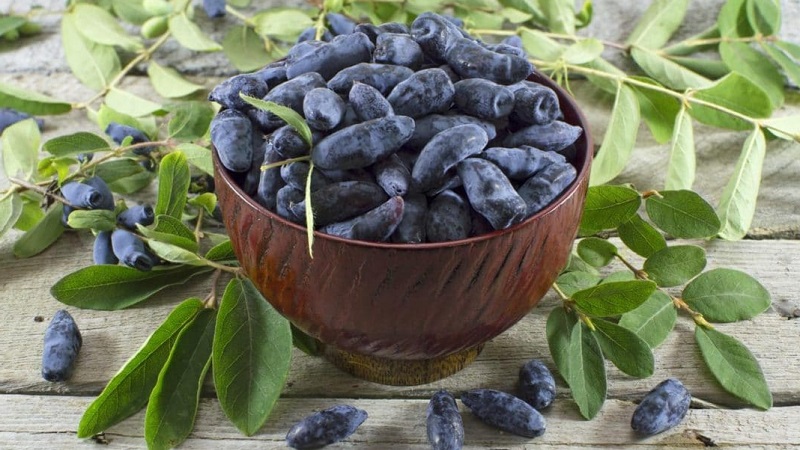
Edible varieties are grown in the garden or in the country. The berries are used to make desserts or eaten fresh. Honeysuckle has an original taste: bitter and tart, sweet and sour. Depending on the variety, sourness or sugariness predominates. Honeysuckle makes tasty and healthy compotes, jams, preserves, juices, and marmalade.
The appearance of the shrub is unremarkable: a spreading plant up to 2.5 m in height with small green leaves and thin brown shoots.The fruits are dark blue, with a bluish bloom, drop-shaped or pear-shaped, elongated. The average weight of the berry is about 1.2 g. The pulp is purple-red, juicy. Depending on the variety, honeysuckle ripens in June–July.
As an example, let us describe the characteristics of edible honeysuckle of different varieties:
- Bakchar giant. The bushes are vigorous and spreading, with large dark green leaves. The shoots are pubescent, thick, straight. The flowers are pale in color and small. The berries are oval, blue, with a waxy coating, average weight - 1.8 g.
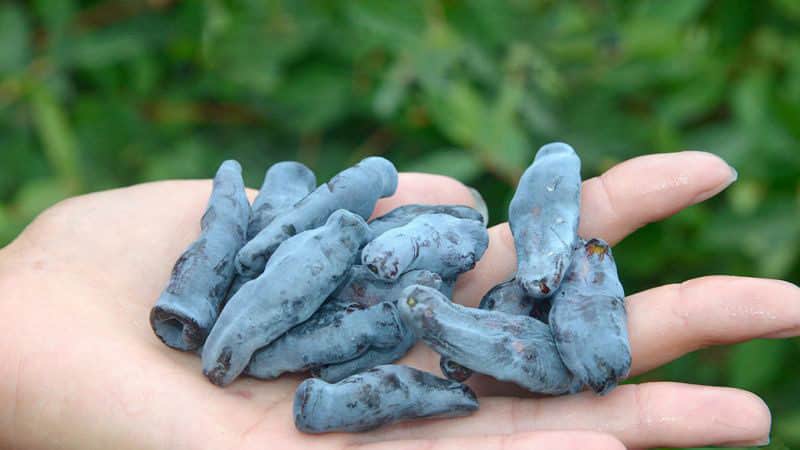
- Blue spindle. The bushes are medium-sized, with a compressed crown. The shoots are thick and smooth. The flowers are white-yellow. The berries are spindle-shaped, black, with a waxy coating. Weight - about 1 g, taste sweet and sour, with bitterness.
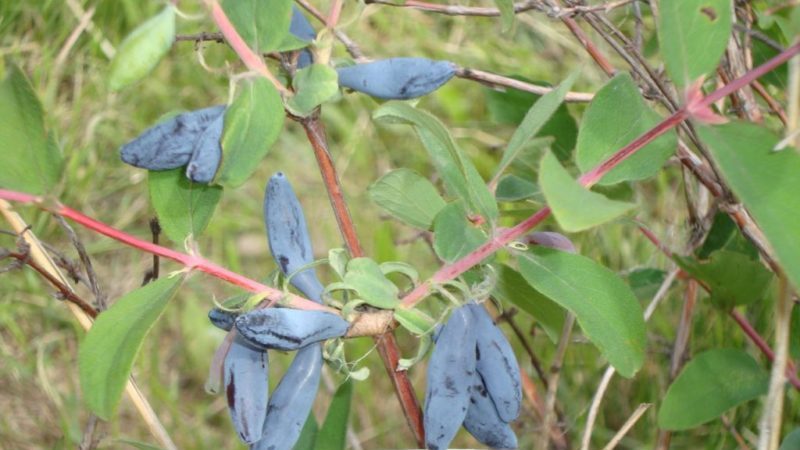 Blue spindle
Blue spindle -
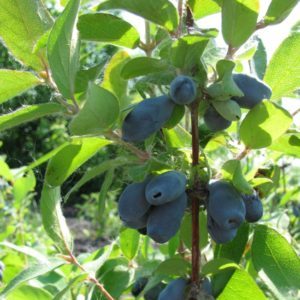 Yoke
YokeYoke. The bushes are medium-sized, dense, with dark green oval-shaped leaves. Flowers are tube-shaped, pale yellow. The berries are elongated, with a rounded base, blue-blue color. The skin is of medium thickness, with a waxy coating. Berry weight - 0.8 g.
- Provincial. The shoots are curved and pubescent. The bushes are low-growing and medium-spreading, compact. The leaves are dark green. The berries are oval, elongated, with a waxy coating, dark blue in color. Weight - about 2 g.
- Titmouse. The bushes are vigorous, with curved shoots. The color is light brown, there is pubescence. The leaves are medium and green. The berries are oblong-oval, yellow-blue, weighing about 0.8 g each. The skin is thin, the taste is refreshing.
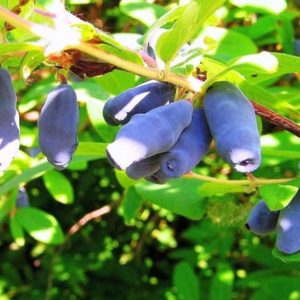 Titmouse
Titmouse
Inedible
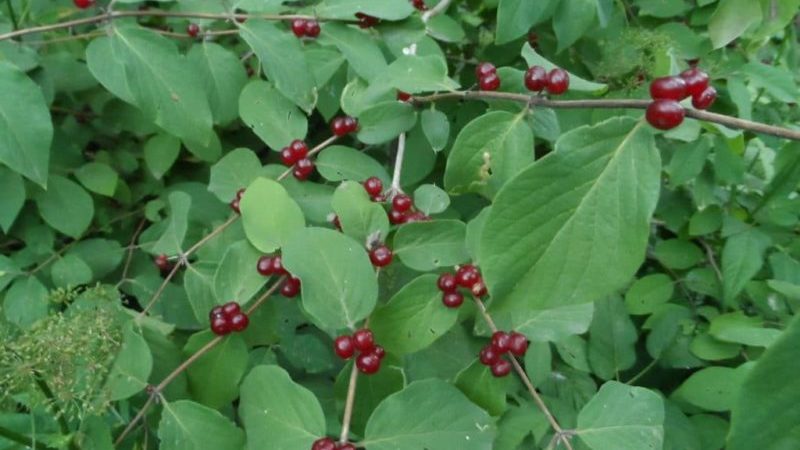
The fruits of inedible honeysuckle are red, yellow, and orange. Such shrubs grow not only in the wild, in swamps and forests, but also in the garden - summer residents use the plants as decoration for their plots.
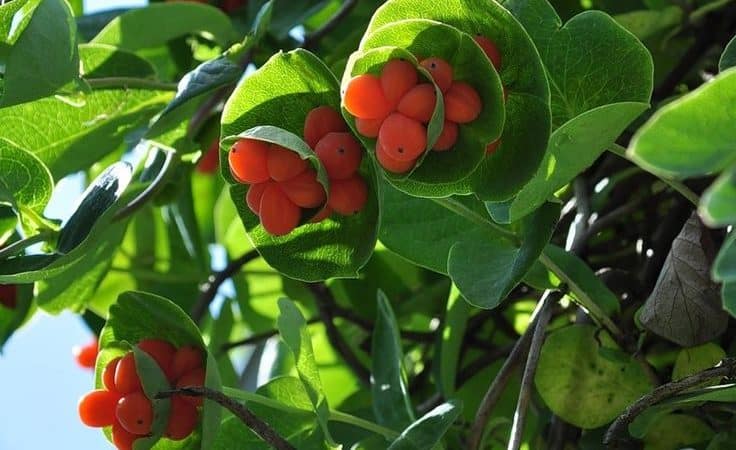
Depending on the type and variety, inedible honeysuckle can be tall, medium-sized, or low (up to 0.5 m). The shoots of the shrubs are pubescent, the leaves are smooth. Honeysuckle also exists in the form of a vine. A distinctive feature of all inedible varieties is their beautiful and large flowers. Flowering occurs in May and lasts 1-2 months. Flowers come in white, red, yellow, purple, and pink.
Known species and varieties:
- Honeysuckle. The height of the climbing bush reaches 5-6 m, the leaves are dense, dark green, with a bluish tint. The flowers are pinkish-yellow or white, fragrant. Red fruits appear after flowering.
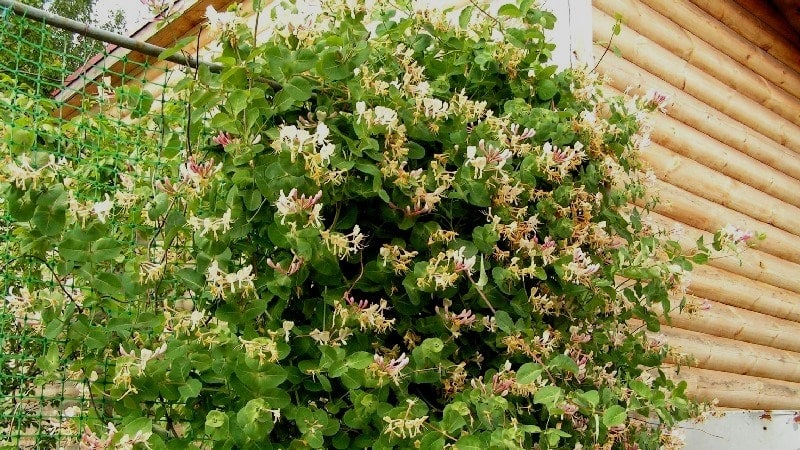 Honeysuckle
Honeysuckle - Brown. The height of the bush is about 2 m, width is 1.5 m. The shoots are curly and reddish. Orange-red flowers appear from June to September. There is no smell. Red fruits without seeds are collected in clusters.
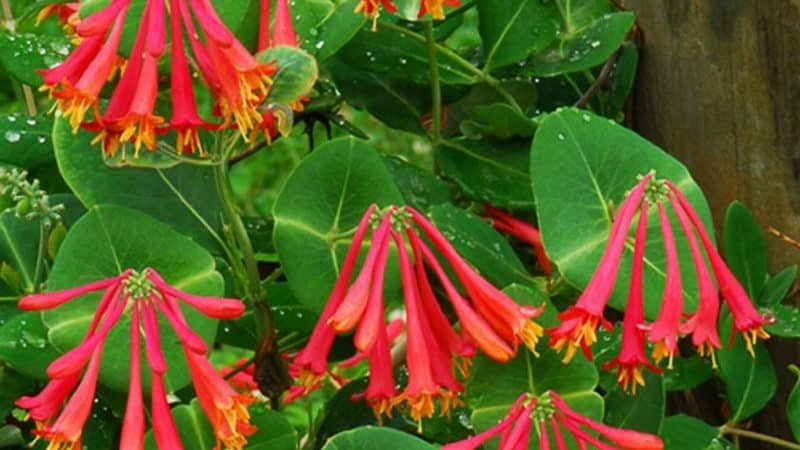 Brown
Brown - Hekrota. A weakly growing climbing shrub 2–4 m high. The length of the purple-red shoots is 30–50 cm. The flowers are tubular, with a red-blue corolla on the outside and purple on the inside. Red fruits grow singly.
- Gerald. An evergreen shrub with long vines and large yellow flowers. Distributes a pleasant aroma of jasmine, red-orange berries.
- Telman. An evergreen climbing shrub 5-6 m high. The leaves are bright green, the flowers are golden-orange. The diameter of the flowers is up to 6 cm. The fruits are spherical, red-orange.
Ornamental shrubs are used for landscaping gazebos, arches, barbecue areas, and garden buildings. Depending on the characteristics of the species and variety, vertical or horizontal gardening is used.
How to distinguish edible honeysuckle from inedible ones
How to determine whether honeysuckle is edible or not? All edible bushes reach a height of 2.5 m. Their shape is classic, like most garden plants, without vines, climbing shoots and other features. The color of the berries is always blue or purple, with a waxy or bluish coating. There are no edible honeysuckles in yellow, red, or orange shades.
The fruits of inedible plants differ greatly not only in color, but also in shape and size. People call real honeysuckle, or forest honeysuckle, wolfberry. Its dark red spherical fruits grow together at the base. They are poisonous because they contain xylostein. The flowers are yellowish-white, grow in pairs, and appear in May–June. The leaves are opposite, entire, dark green above, grayish below, with strong pubescence. The shrub is grown for decorative purposes.
Is inedible honeysuckle poisonous?
The glycoside xylostein, found in berries, causes food poisoning: nausea, vomiting, fever, diarrhea, abdominal pain. When eating such fruits, it is important to rinse your stomach or drink activated charcoal. Then call an ambulance and describe to the doctor in detail what exactly, when and in what quantities was eaten.
Wild, inedible honeysuckle is most often found in shady forests, forest edges, along stream banks, or in swamps.
Which honeysuckle is healthier?
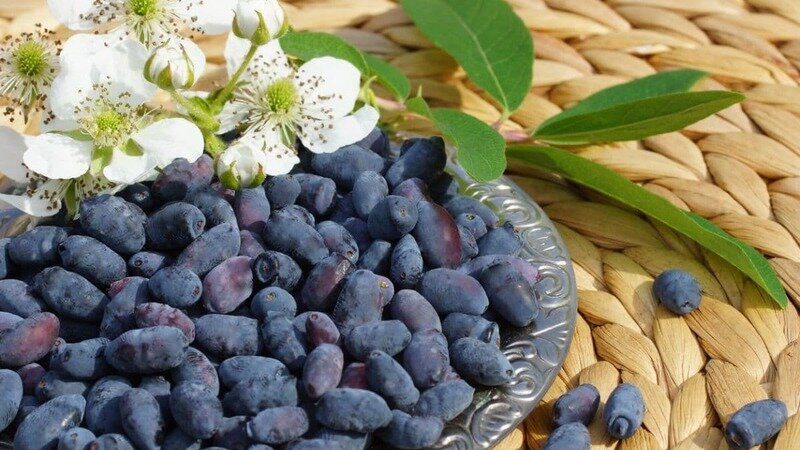
Which honeysuckle is healthier - garden or forest? The fruits of the edible plant contain vitamins A, C, K, group B, organic acids, fructose and sucrose, and microelements. The berries have anti-inflammatory, antimicrobial, restorative properties, and support liver and heart health. Used as an antioxidant, choleretic and diuretic. They are used to prepare tinctures, decoctions, compresses, and tea.The main thing is to follow the dosages and recommendations for preparing folk remedies.
Interesting! Blue honeysuckle berries are rich in anthocyanins, which improve cognitive abilities and vascular tone. Fruits minimize the negative effects of diabetes and diseases of the nervous system.
Although wolfberry is not eaten, it is used to prepare “medicinal” preparations. They are used only on the recommendation and under the supervision of a doctor. Shoots, leaves and flowers have wound-healing, analgesic, and antiseptic properties. Products made from them are used as poultices for abscesses, boils, eczema and other skin lesions.
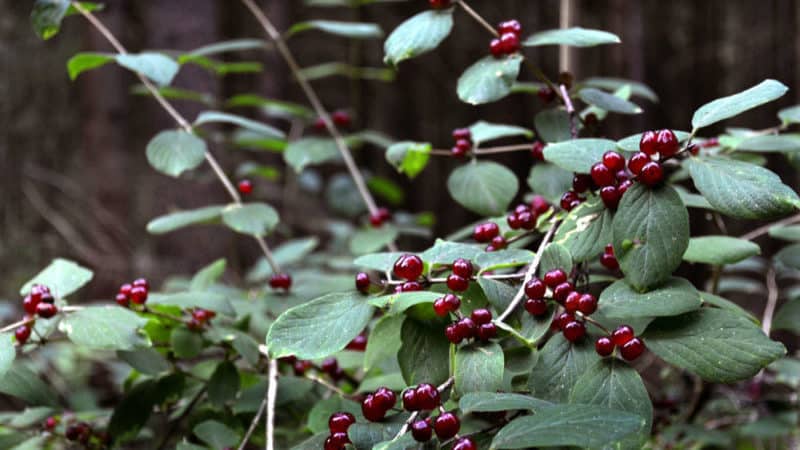
It is important to ensure that wolfberry does not get into food and is isolated from children and other family members. It is dangerous to prepare tinctures and decoctions at home. Even toxic leaves of the bush can cause harm if consumed internally.
Conclusion
What is the difference between edible honeysuckle and inedible one? Edible is distinguished by low spreading bushes, pale yellow flowers and blue oblong fruits. Inedible (decorative) reaches a height of 6 m, its flowers are multi-colored, large, with a pleasant aroma. The berries are large, rich red or orange. There is also a wild variety of inedible honeysuckle - wolfberry. It grows mainly in forests, bolts, and river bottoms. Its fruits are toxic to humans.